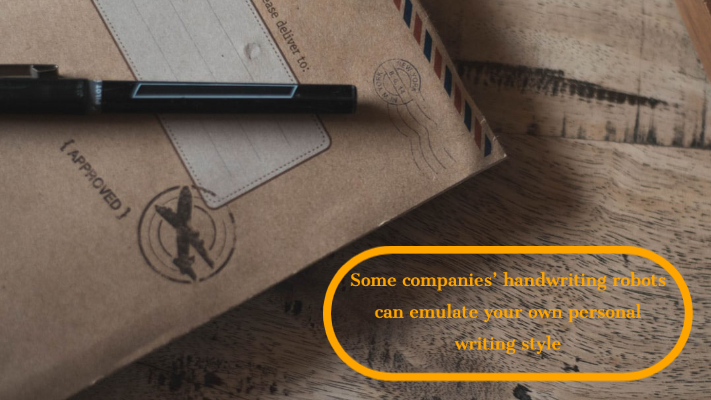At this point in time, it is rather trite to observe that technology is “changing everything.” It does not take a very keen eye and close attention to realize that nearly every facet of human life has been upended and completely transformed by the relentless march of technological progress. However, there have been some small places of refuge which have until now felt impenetrable to these advances.

Handwriting is one such refuge. The vast majority of human correspondence now takes place in electronic form. Texts, emails, phone calls, and video calls now form the fabric of modern communication. Those who take notes by hand rather than on a laptop, and who still send out handwritten cards for birthdays and holidays, are seen as “old fashioned.”
Already, though, this is starting to change. This is thanks to the advent of handwriting robots, which are fundamentally changing the way we conceptualize the written word. These are robots which have been programmed to hold a pen and to write just like a person, albeit much faster.
What is their writing like?
The first question you have on your mind is probably, “What does handwriting by handwriting robots look like?” Essentially, handwriting robots can be used with one of two approaches:
- To write with a specific font: If there’s one thing robots can do well, it’s operate with uniformity. Handwriting robots are no exception — these little machines can be programmed to write with any font you desire, from large, neat block letters to fancy, flowy cursive. 86% of Americans were predicted to buy presents in 2017 — when the next holiday season approaches, bear in mind that this method is perfect for crafting cards and posters that look store-bought.
- To emulate real handwriting: This use is a little bit sneakier. A number of companies now exist that will allow you to send in a writing sample. Once the sample has been analyzed, the in-house handwriting robots will be able to emulate your own personal writing style, down to the little nuances and idiosyncrasies that make our writing unique.
Is the handwriting distinguishable from that of a real human?
The next question you will likely have is, “Does a piece written by a handwriting robot actually look like it was written by a human?” The answer, if the robot is working based on a real writing sample and not just a built-in font, is yes…mostly.
At first glance, a card written by a handwriting robot will look pretty much exactly like a card written by a real human. The style of the letters with their calculated sloppiness, and the imperfect execution of the piece as a whole will indeed make it look very convincing. At the end of the day, whether or not it will become clear that the writing has been faked will come down to who is doing the observing.
When a bona-fide graphologist — someone who analyzes handwriting for a living to discern information about the writer — compared a real writing sample with one written by a handwriting robot, they were able to tell the difference. They spotted a subtle lack of fluidity in the robot’s text which would not be present in a human’s writing. The robotic arm didn’t quite move from one character or word to another the same way a real person would, and the graphologist picked up on it.
However, someone who was a bit less observant or who spent less time analyzing the handwriting robot’s handiwork very well may not have noticed a difference. This, of course, has serious implications when it comes to the way we think about written communication and the sense of authenticity it conveys.
Some concluding thoughts
Just as a company such as GM can produce millions of cars in just a single year, the automation and commodification of handwriting will allow huge numbers of “handwritten” cards to be produced in a short period of time.
While the commercialization of handwritten materials may be a bit alarming, there are some more benevolent uses for the technology. For the 10,000 Americans who turn 65 each day, things that were once easy, such as writing a card, will gradually become more difficult. Handwriting services can be an easy way for senior citizens to continue to offer handwritten cards to the people they love.
Whether we like it or not, handwriting robots are here, and they’re here to stay. All we can do is wait and see what the future will bring — perhaps within a decade, all of us will have a handwriting robot sitting at our desks doing our writing for us.






